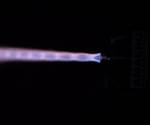GE Team Secretly Printed a Helicopter Engine, Replacing 900 Parts with 16
GE Additive’s Ehteshami says, “To make these parts the ordinary way, you typically need 10 to 15 suppliers, you have tolerances, you have nuts, bolts, welds and braces.” With additive, “all of that went away.” The helicopter project is a detail in a story worth knowing.
The GE Reports website occasionally publishes pieces that revisit the history of GE’s development work so far in additive manufacturing—the journey that has culminated in the LEAP engine fuel nozzle and other aircraft engine components now made through AM, as well as the purchase of AM equipment makers Arcam and Concept Laser. The latest example is a profile of Mohammad Ehteshami, head of the newly created GE Additive group, which describes the exploration into the potential of AM that occurred immediately after GE Aviation acquired 3D printing pioneer Morris Technologies in 2012. That exploration involved a team of engineers tasked with reinventing a helicopter engine, a team whose existence as a separate project group was disguised.
From the GE article:
They [Ehteshami and others from GE and Morris] moved a few machines to a drab building away from the main campus across Interstate 75 and started experimenting in secret with printing pieces of an old commercial helicopter engine. “We took six engineers and told them go and see what portion of the total engine they can print,” Ehteshami says. “We hid them from our financial management, because we didn’t want them to cut our budget.”
The clandestine effort paid off. Within 18 months, the team was able to print half of the machine, reducing 900 separate components to just 16, including one segment that previously had 300 different parts. The printed parts were also 40 percent lighter and 60 percent cheaper. “To make these parts the ordinary way, you typically need 10 to 15 suppliers, you have tolerances, you have nuts, bolts, welds and braces,” Ehteshami says. “All of that went away.”
The story of GE’s advance of additive is worth telling, in no small part simply because there is a story there, and a long one. The successful development of the 3D-printed fuel nozzle was not easy and was not certain. However, as the GE Reports article describes, getting to this nozzle made the fuel efficiency of the LEAP engine possible. This is perhaps an extreme case—the part is very complex and came very early in the development of AM as a production technology. Yet other metal AM parts that have come later have posed challenges as well, and as additive technology improves (including our knowledge about the application of that technology), it is not yet clear how far we can or will be able to go in making 3D printing as straightforward as other manufacturing operations. The process variables are sufficiently nuanced and complex that—so far—trial-and-error has been the means of mastering them. Thus, it might be that some manner of story is going to be part of every significant AM success. As the most sophisticated metal 3D printing technologies find their place in manufacturing, it might be that the places they find consist of all those applications in which the engineering challenge of the component is great enough that embarking upon the story is a trip worth taking.
Related Content
-
How Norsk Titanium Is Scaling Up AM Production — and Employment — in New York State
New opportunities for part production via the company’s forging-like additive process are coming from the aerospace industry as well as a different sector, the semiconductor industry.
-
This Drone Bird with 3D Printed Parts Mimics a Peregrine Falcon: The Cool Parts Show #66
The Drone Bird Company has developed aircraft that mimic birds of prey to scare off problem birds. The drones feature 3D printed fuselages made by Parts on Demand from ALM materials.
-
Aircraft Engine MRO: How Additive Manufacturing Plus Robotic Finishing Will Expand Capacity for Blade Repair
AM offers the chance to bring fast, automated processing to individualized, part-by-part restoration of turbomachinery. A cell developed by Acme Manufacturing and Optomec is able to automatically repair 85,000 unique aircraft engine blades per year.












